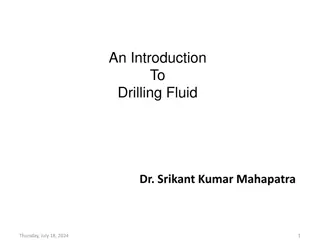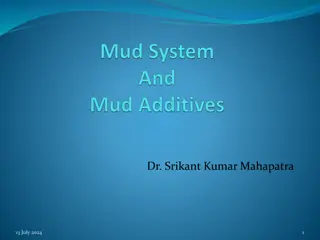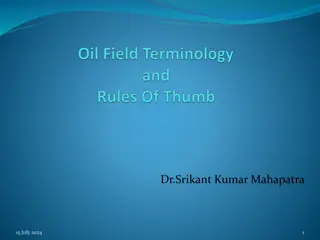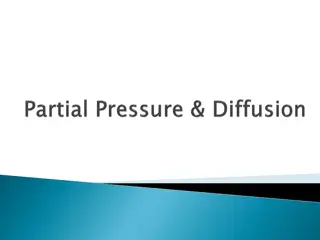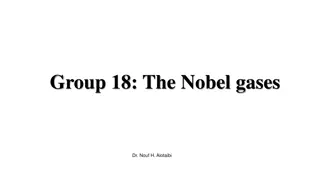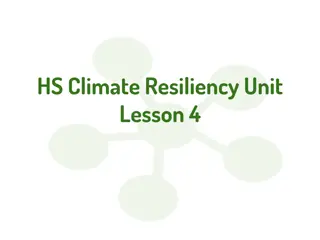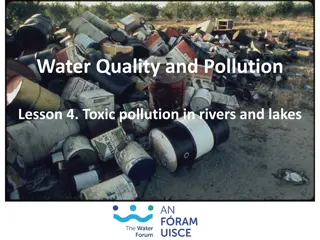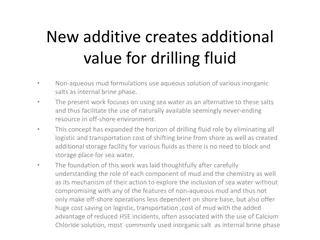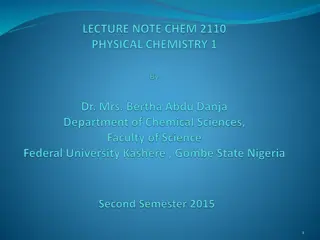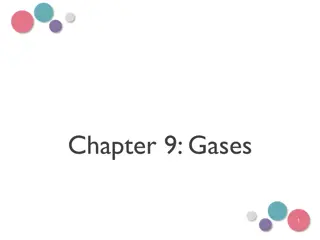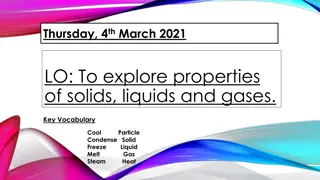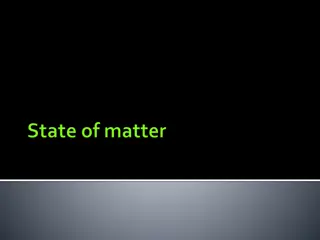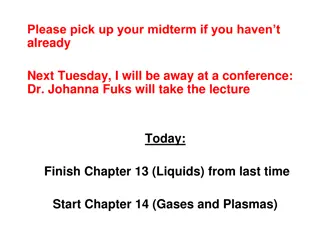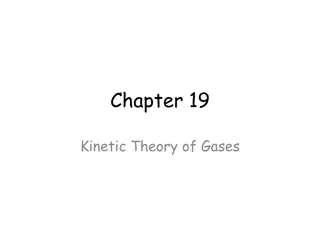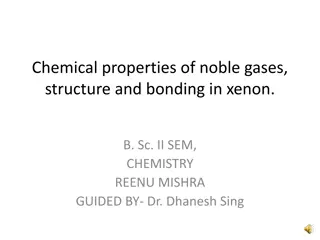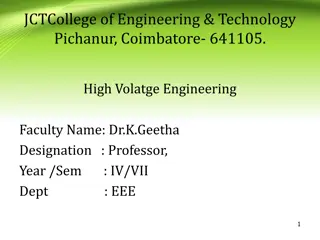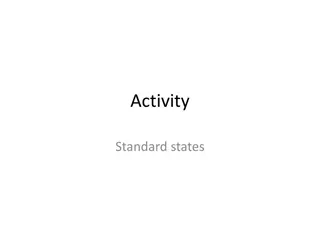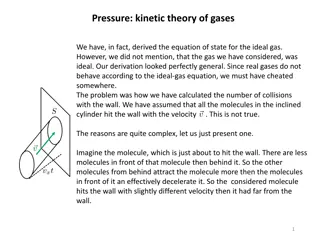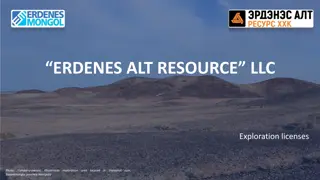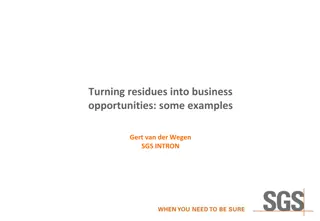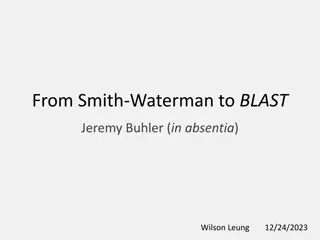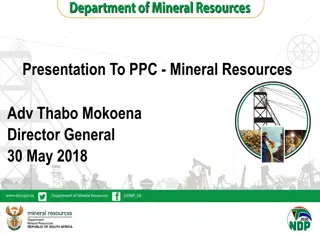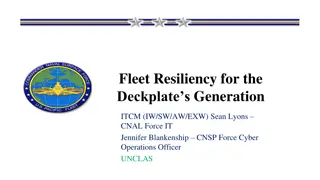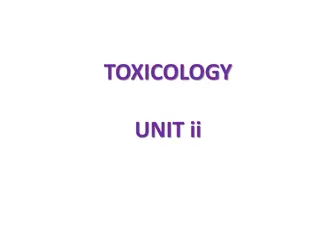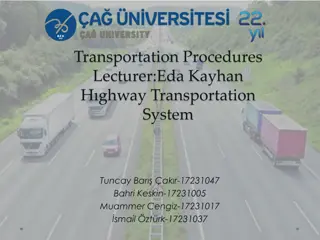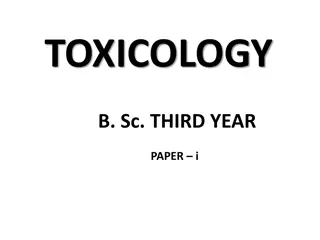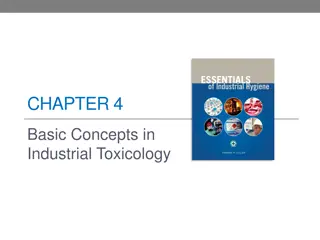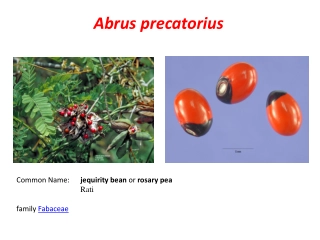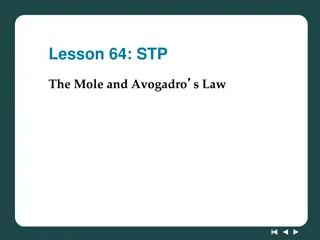Post-Blast Fumes: Guidance on Mitigating Toxic Gases in Drilling and Blasting Operations
Explosives used in blasting operations generate post-blast fumes, which can contain toxic gases like oxides of nitrogen (NOx) and carbon monoxide. This toolbox talk provides guidance on reducing fume production and avoiding exposure, with a focus on the physiological effects of different gas components. Attention is particularly drawn to concentrations of CO and NOx for surface operations, given their toxicity. Safety measures are discussed for both normal and abnormal conditions to ensure the well-being of all involved in the blasting process.
Download Presentation

Please find below an Image/Link to download the presentation.
The content on the website is provided AS IS for your information and personal use only. It may not be sold, licensed, or shared on other websites without obtaining consent from the author. Download presentation by click this link. If you encounter any issues during the download, it is possible that the publisher has removed the file from their server.
E N D
Presentation Transcript
Updated July 2019 Drilling and Blasting Toolbox Talk : 16 Post-Blast Fumes Guidance on post-blast fumes and the steps to be taken to help reduce their production and avoid exposure to them. Target Audience All those involved in the blasting operation especially the post-blast inspection process. This toolbox talk may be freely reproduced except for advertising, endorsement or commercial purposes. It has been developed by the Quarries National Joint Advisory Committee (QNJAC) to help quarry operators, contractors, managers and others make health and safety improvements in the quarry industry. This guidance represents good practice which may go further than the minimum you need to do to comply with the law. If you use the information provided in this document please acknowledge QNJAC as the source . Slide 1 of 8
Post-Blast Fumes 1. Introduction All explosives will produce post-blast fumes In the order of 850 to 1,000 litres of gas are generated per kilogramme of explosive detonated So a blast containing 5 tonnes of explosive can produce up to 5 million litres of gas in about 1 second For the most part these fumes will consist of a combination of the following gases and vapours which are largely invisible Carbon Dioxide Nitrogen Water Vapour (Steam) Whilst these gases do not support life they are not toxic. Slide 2 of 8
Post-Blast Fumes 1. Introduction The ranges of the major components produced from explosives and their physiological effect are shown in the following table Gas Nitrogen, N2 Carbon dioxide, CO2 Water vapour, H2O Carbon monoxide, CO Nitrogen oxides, NOx Others Proportion (volume) 25-35% 5-35% 30-65% 0.5-5% 0-0.5% Traces Physiological effect Asphyxiant Asphyxiant, toxic Asphyxiant Toxic Toxic, irritant Toxic, irritant Owing to their toxicity, particular attention is paid to concentrations of CO and NOx for surface operations NOx is the more serious danger Slide 3 of 8
Post-Blast Fumes 2. Toxic Fumes Under Normal conditions a small portion of the post-blast fumes produced are toxic including Oxides of Nitrogen : commonly known as NOx and often seen as orange/brown fumes Carbon Monoxide, which is a colourless and odourless gas Particles of explosive residue Under Abnormal conditions, where complete decomposition of, for example, ammonium nitrate in ANFO, does not take place, perhaps 75 to 125 litres of NOx are produced per kilogramme of explosive, on occasions greater. NOx are approximately 50% heavier than air and hence in calm or light wind conditions can congregate in low lying areas where they pose a serious risk. CO is slightly lighter than air but short lived and usually quickly disperses Slide 4 of 8
Post-Blast Fumes 2. Toxic Fumes Fumes should not be tolerated where they can put workers, the public and wildlife at serious risk of health damage or even death Slide 5 of 8
Post-Blast Fumes 3. Factors Increasing the Level of Toxic Fumes Fumes could cause permanent damage to your health NOx can turn into acid inside your lungs. This causes blisters than can burst several days later and cause death by drowning Carbon Monoxide replaces oxygen in your blood and is thus poisonous Manufacturers of explosives will design their products to be close to being Oxygen Balanced That is there is just enough oxygen in the product to turn all the fuel into carbon dioxide If this balance is upset then the level of toxic fume will increase Reduced fuel or increased oxygen gives increased NOx Increased fuel or reduced oxygen gives increased Carbon Monoxide Slide 6 of 8
Post-Blast Fumes 3. Factors Increasing the Level of Toxic Fumes If for some reason the explosive does not perform as expected then this can also result in increased post-blast toxic fume production Examples of this which can be controlled are: Shock/gas desensitisation of the explosive during the blast and general poor attention to blast design principles Inadequate confinement at the time the hole is detonated Inadequate priming of the explosive Poor choice of explosives, use of old or contaminated products or lack of control of on-site product mixing Such problems are often indicated by NOx being generated from a specific part of the blast only Examples difficult to control and which may occur across the whole shot are reactivity of the explosives with the rock and hot products of reaction meeting a cold atmosphere It is difficult to avoid the occasional generation of fumes in this manner and you should always therefore presume that the post-blast fume cloud is likely to contain toxic fumes Slide 7 of 8
Post-Blast Fumes 3. Factors Increasing the Level of Toxic Fume Site-mixed ANFO ANFO needs 5.6% of fuel oil by weight to be oxygen balanced Reduced fuel gives NOx Increased fuel gives Carbon Monoxide Inadequate mixing of the ANFO will also increase the level of fume Wet AN, poor absorbent quality of the AN prills and a high level of ammonium nitrate fines can also add to fume generation Shotfiring rules should cover the procedure used when site-mixing ANFO Water ingress into ANFO and churning when bulk emulsion loading ANFO is not waterproof: if ANFO comes into contact with water in a wet or damp hole then the level of NOx in post-blast fumes will greatly increase Poor bulk emulsion hose handling practices: too fast withdrawal or top loading wet holes can cause mixing/churning of water and mud with explosive Slide 8 of 8
Post-Blast Fumes 4. Exposure to post-blast fumes In the event of someone who has been exposed to post-blast fumes feeling unwell immediate medical assistance should be sought Respiratory symptoms may take some time to develop The medical practitioner should be made aware of the potential exposure to NOx and Carbon Monoxide Fatal Incident In the Philippines in 2006, a shotfirer was conducting a post-blast inspection at a quarry when he fell into a cavity. He was rescued and taken to hospital with apparently only minor injuries. At the time of his rescue, it was noticed that his breathing was laboured, but this information was not passed on to the hospital staff. He died the next day of severe pulmonary oedema (NOx poisoning), which was not recognised by either the medical team or operational staff. Slide 9 of 8
Post-Blast Fumes 5. Key Points Always follow the guidance given by the manufacturer relating to the conditions for use of explosive products and the method of loading and priming Never use ANFO in a wet or damp hole and always ensure that site-mixed ANFO is correctly and completely mixed with the correct proportion of AN to fuel Leave sufficient time for fumes to clear before carrying out a post-blast inspection Be aware of the potential health effects of exposure to post-blast fumes Medical practitioners should be made aware of the potential exposure to NOx and Carbon Monoxide Slide 10 of 8
Post-Blast Fumes 5. Key Points The underlying causes of high NOx are fuel-deficiency in the explosive or detonation reactions that do not continue to completion. Therefore always: Use the correct product for the job Pay attention to mixing, loading and priming practices Stem and confine the explosives well and remember, poor confinement creates problems other than fumes! Slide 11 of 8


